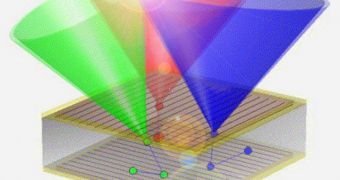Scientists at the US Department of Energy's (DOE) Lawrence Berkeley National Laboratory (Berkeley Lab) have been conducting research related to the fields of nuclear physics for many years. A couple of years ago, in 2008, experts at the Lab's Nuclear Science Division (NSD) launched the Applied Nuclear Physics program, through which they sought to develop and implement even more widely-useful technologies for applications ranging from medicine to astronomy and surveillance. Together with colleagues from the Department of Nuclear Engineering at the University of California in Berkeley (UCB), the team has just been awarded two grants to research gamma-ray detectors.
“Pure science and practical applications push each other. Adapting laboratory devices to real-world uses gives us many opportunities to demonstrate new techniques, which often turn out to benefit science as well,” says NSD expert Kai Vetter, who is also a UCB DNE professor in residence. He took command of the Applied Nuclear Physics program after having spent more than six years at the DOE Lawrence Livermore National Laboratory (LLNL). The scientist says that one of the main goals of the program is the development of practical applications from highly-theoretical principles.
As part of the most recent federal efforts to encourage the Berkeley collaboration, the Lab and UCB recently received important funds from the DOE Office of Nuclear Physics. One of the grants was awarded by the Department directly, whereas the other came through the American Recovery and Reinvestment Act of 2009 (ARRA). Both grants are destined to improve the efficiency and versatility of gamma-ray detectors. Part of the money will be used to the scope and resolution of radiation spectrographs, while the other will be used to develop techniques to aid the three-dimensional imaging of gamma-ray sources. NSD expert Lucian Mihailescu is the principal investigator of the three-year, $1 million-plus 3D imaging project.
The researchers have studied such issues in the past, when they created a Compton imager for the US Department of Homeland Security (DHS). The machine could scan through various materials, and produce images of what's underneath using gamma-rays, but it was the size of a building. Improvements done in Berkley dropped the size down to that of a cart, and the new funds are destined to help the researchers produce a truly practical version. The real goal here is developing instruments capable of improving the reliability and practicality of cancer therapy using heavy-ion beams.
“DOE has a long interest in cancer therapy with protons and heavy ion beams because of the huge advantage over x-ray therapy. n ion beam can penetrate deep and deposit most of its energy right in the tumor, with minimal damage to surrounding tissue. But there’s a serious drawback. At present there’s no way to get a quick measure of the actual dose or how it’s distributed,” Vetter says.

 14 DAY TRIAL //
14 DAY TRIAL //